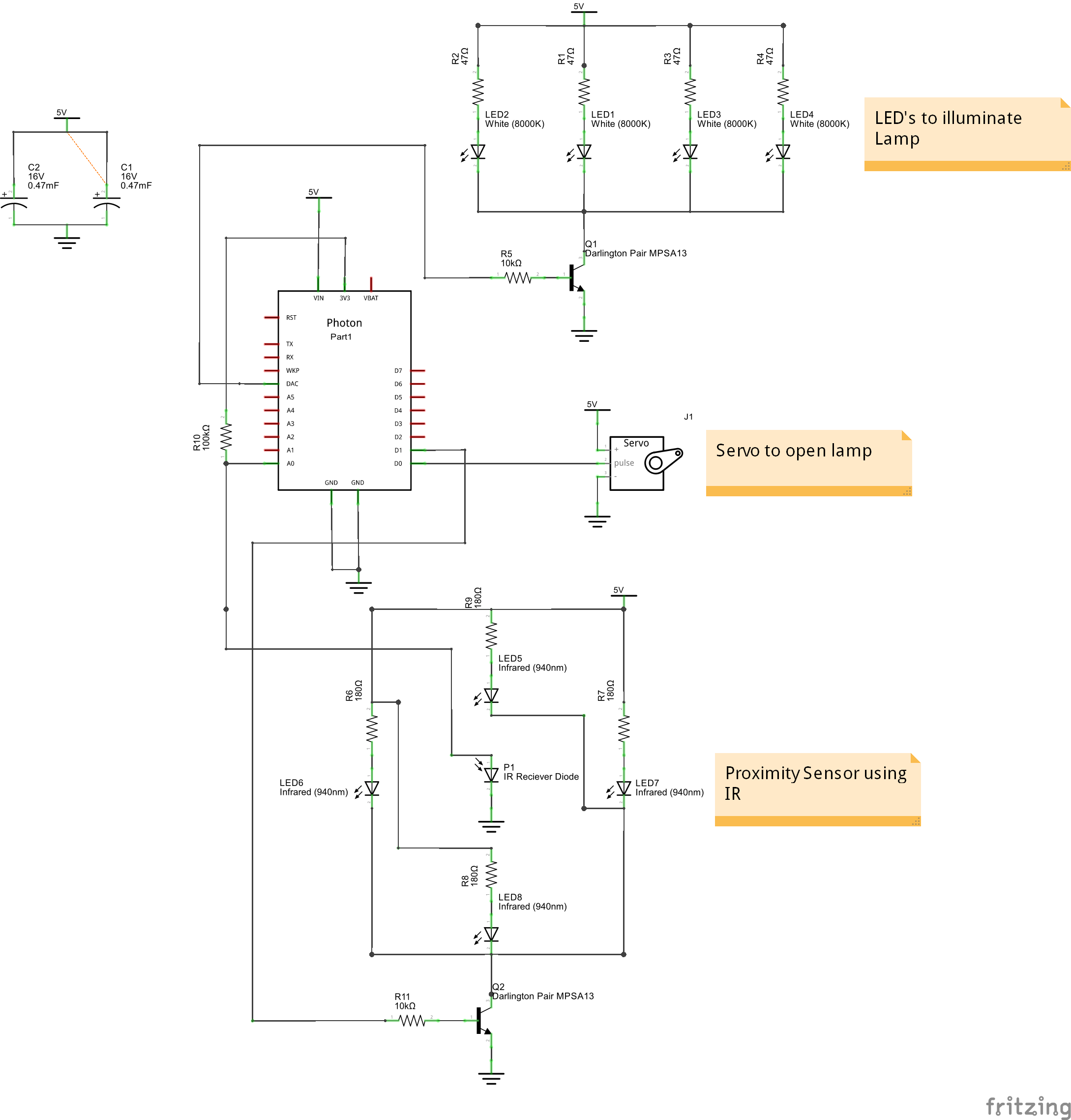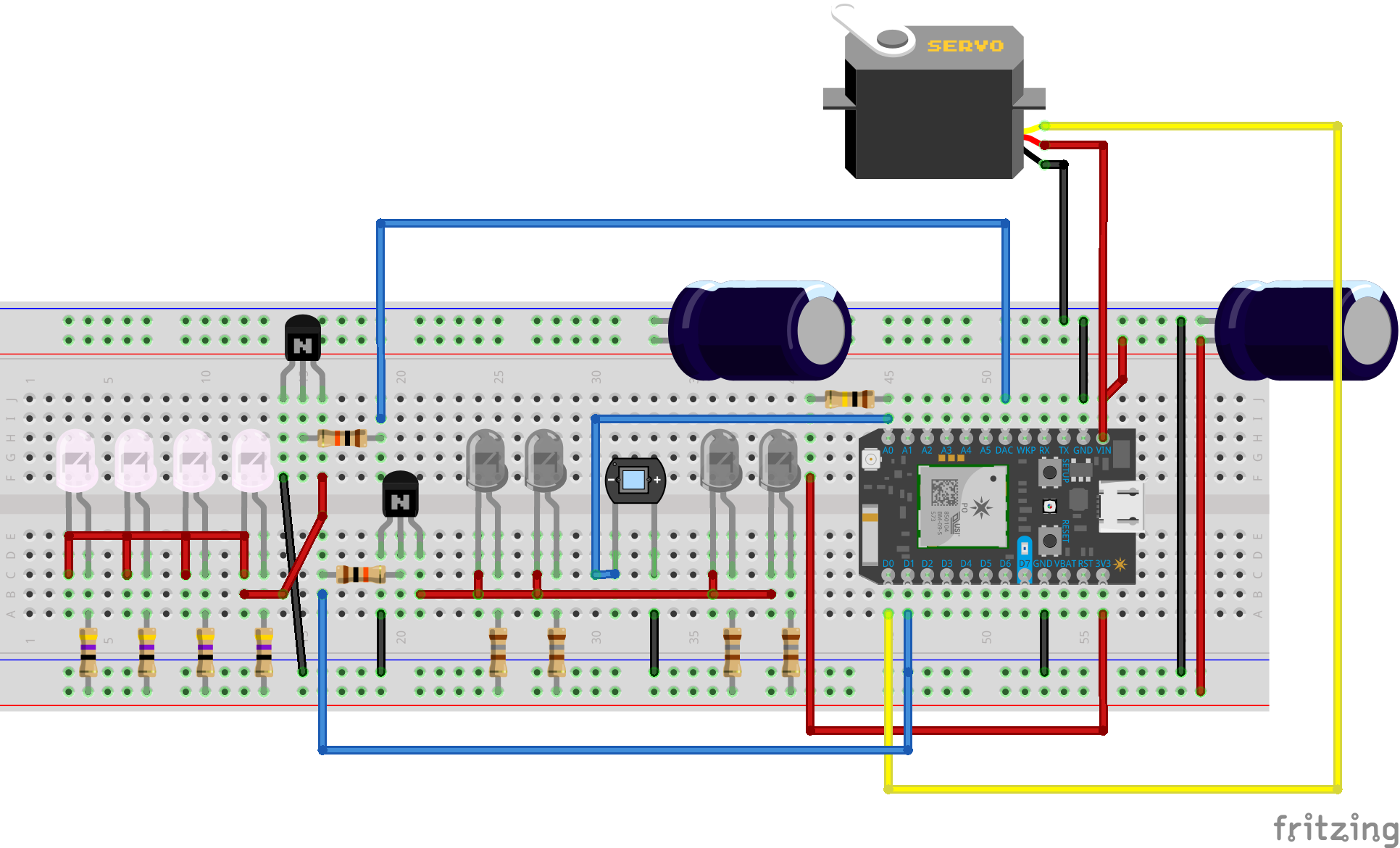It's a Holocron lamp using the force open and close. With the wave of a hand over the top any discerning Jedi can access the path the the light.
This project is based around the Particle Photon IoT dev board, and I have to say this has been a joy to work on!
In the trailer you can see a few images and videos from the start to the finish.
First step was to think of everything I needed to make this work, I settled on an IR proximity sensor, a servo for the movement and some super-bright white LED's for the light.
Firstly I prototype the electronics on the breadboard and fleshed out all the details in the code. It works! this was obviously a relief.
Once all the code and circuitry had been proven it was time to begin printing the enclosure.
I chose to use gold as this is a traditional Holocron material, the enclosure is designed to be press fit together, meaning there is hardly any need for support structure when printing.
Total printing time ran into about 30 hours, so best leave plenty of time!
Once I had the main enclosure parts printed it was time to customize the electronics and build them in.
Not only will the Holocron work with the force...
...it also works as an IoT device for those not as strong in the force
Hope you like this little project, any comments / feedback welcome!













_t9PF3orMPd.png?auto=compress%2Cformat&w=40&h=40&fit=fillmax&bg=fff&dpr=2)









Comments